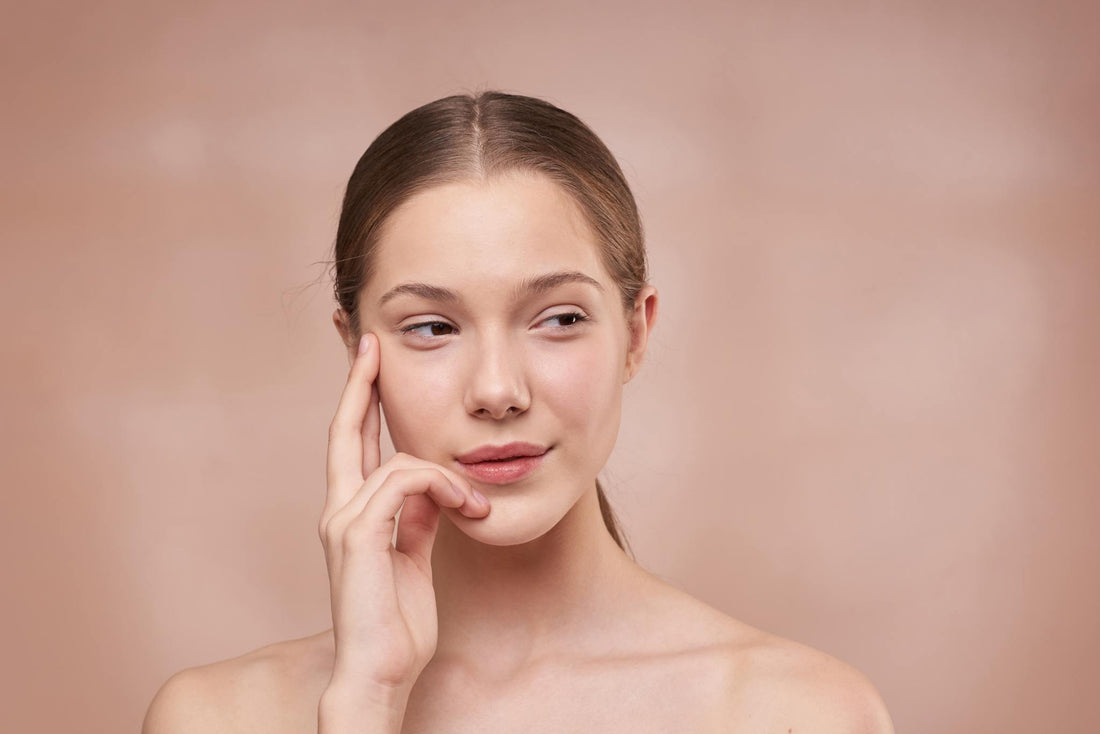
Skin Science 101: Understanding Your Skin Layers!
Share
Our skin is the largest organ in our body. That's right, an external organ is a fleshy covering to keep us safe. Our multifaceted skin is our body's waterproofing, insulating shield, protecting the body from temperature extremes, harsh sunlight, and toxic substances. It produces vitamin D, which is converted to calcium for strong bones and emits antimicrobial chemicals to prevent infection. It is also part of our sensory system, and the nerves keep the brain connected to the outside environment.
The proper skincare ensures our skin is happy and healthy. What is your skincare routine? Do you slather the newest serums, creams, and tonics from your favorite brand? Understanding how your skin works - each layer and function, is essential to assess your skin's health and improve and maintain your skin's healthy glow.
Your skin's reactions - acne, blackheads, and sweat stem from the 3 layers of the skin, each having its unique function. The outer layer, the epidermis, is the visible part of the skin. Beneath the epidermis is the dermis, followed by the subcutaneous layer, consisting of a fatty tissue layer.

The Epidermis
The epidermis is the skin's outermost layer, primarily consisting of dead skin cells functioning as a protective barrier keeping dangerous pollutants out while maintaining moisture and nutrients. It's also the first defense against sun damage.
The outer layer of the epidermis is the stratum corneum, a layer of skin that varies in thickness. It can be ten times thicker on the soles of the feet than around the eyes. This barrier is our body's first defense, keeping the immune system healthy, and free from viruses while being a barrier keeping your body healthy and hydrated. The epidermis is also home to your microbiome , which usually gathers around the hair follicles. It wards off pollutants and irritants from the outside world.
In the bottom layer of the epidermis (stratum basale), new skin cells form and move up through the layers as they get older. After about a month, they reach the outermost layer of your epidermis. The old skin cells shed off, making room for the new cells that emerge from the bottom layer. As we get older, this process can slow down and require assistance. This is why a gentle exfoliate is needed to remove the dead skin cells of the epidermis. Without proper exfoliating, the accumulated dead skin cells result in a dull complexion, or the cells clog pores in the dermis layer.
How to keep your epidermis happy : wash your face with Ultra-Gentle Face Cleanser , exfoliate regularly to remove dead skin cells, wear sunscreen, and maintain a healthy skin microbiome with MONO's prebiotic-rich serum .
The Dermis
The dermis, which lies between the epidermis and the subcutaneous tissues, is the second and thickest of the three primary layers of skin. The dermis is responsible for a large portion of the body's water supply, regulating temperature and supplying blood to the epidermis.
The dermis is where most of your skin's essential functions occur, as this layer is where the nerves, proteins, glands, enzymes, and blood arteries are located at this level. Here are all the things that happened in your dermis:
Blood and lymph vessels . They are responsible for supplying nutrients to your skin and removing waste or toxins.
Tassel sweatshirt . They produce perspiration through your pores, which cools the body and removes impurities.
Collagen and elastin . The dermis contains collagen and elastin, making your skin firm, flexible, resilient, and stay in shape.
Oil acorns . The oil produced by the oil glands lubricates the skin, keeping it soft and smooth. It also prevents you from absorbing too much water when you swim.
Hair follicles . The hair follicles grow fine hair all over your skin.
How to keep your dermis happy : drink 8 glasses of water every day, use retinol or bakuchiol, and moisturize with MONO's Face Moisturizer - enriched with collagen-stimulating Beta Glucan, Inulin, and Alpha-Glucan to help balance sebum production.
The Subcutaneous Layer
The hypodermis, also known as subcutaneous tissue, is the top layer of the skin, consisting primarily of fat, blood vessels, and nerves. This layer's primary function is to keep the body warm and comfortable and provide support to the blood vessels, nerves, and glands in the dermis.
How to keep your subcutaneous layer happy : your skincare products won't penetrate deep into the subcutaneous layer. However, maintaining a healthy gut with foods rich in prebiotics and probiotics and maintaining a healthy lifestyle can help your skin glows from within.
These fundamentals will help you understand how to care for and keep the health of your skin properly!
